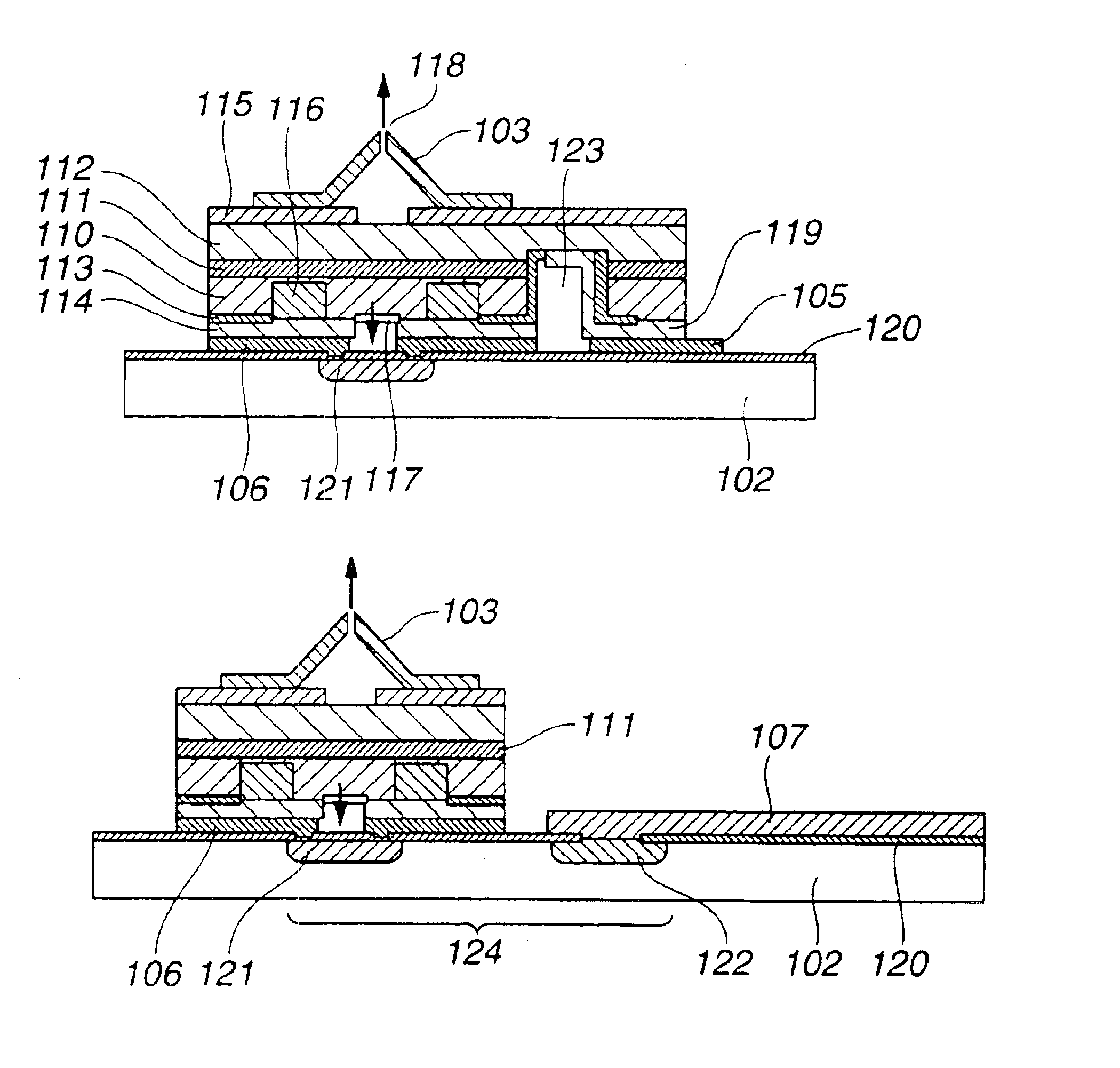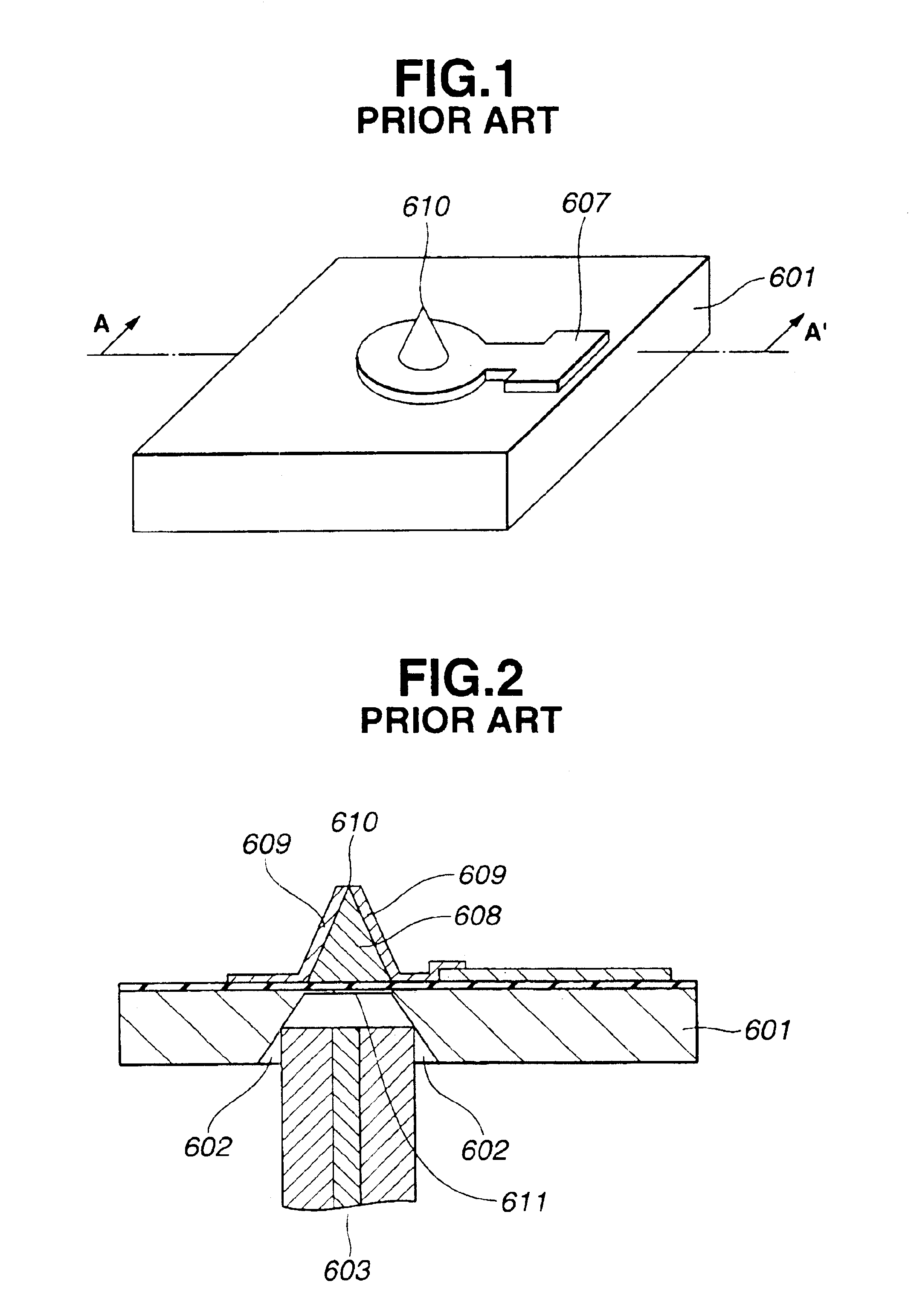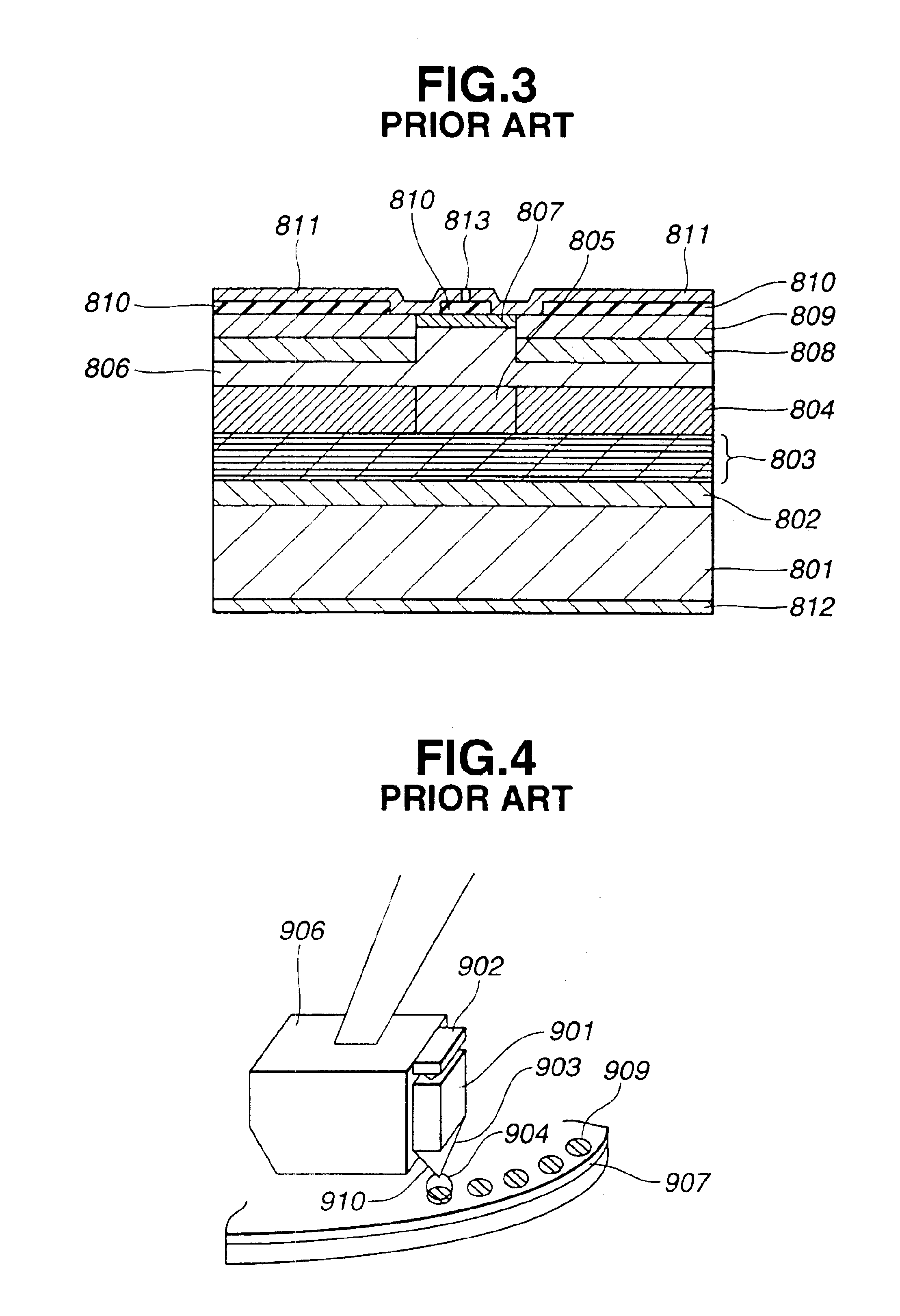Surface-type optical apparatus
a surface-type optical and optical apparatus technology, applied in the direction of material analysis using wave/particle radiation, instruments, nuclear engineering, etc., can solve the problems of unsuitable multiple arraying, unsuitable medium surface or the probe tip being likely to be damaged, and the coupling loss is likely to occur, so as to achieve rapid scanning, reduce the effect of coupling loss and low cos
- Summary
- Abstract
- Description
- Claims
- Application Information
AI Technical Summary
Benefits of technology
Problems solved by technology
Method used
Image
Examples
first embodiment
[0107](First Embodiment)
[0108]FIGS. 5A and 5B illustrate a first embodiment of a SNOM head of the present invention. The SNOM head includes a surface emitting laser, a protrusion member with a minute opening, which is formed on the surface of epitaxial layers of the laser, and a cantilever to a tip of which the laser with the protrusion member is mounted.
[0109]As illustrated in FIG. 5A of a perspective view and FIG. 5B of an A-A′ cross-sectional view of FIG. 5A, a surface emitting laser 4 used in this embodiment includes a one-wavelength cavity 12 consisting of an AlGaAs / GaAs multiple quantum well (MQW) active layer, an AlGaAs spacer layer, and n-type and p-type distributed Bragg reflector (DBR) mirrors 11 and 13 consisting of multiple (about twenty (20) to thirty (30) pairs) AlAs / AlGaAs layers of a ¼-wavelength thickness that sandwich the cavity 12. These layers are epitaxially grown on an n-GaAs substrate 10 by a metal organic vapor phase epitaxy (MOVPE), for example. An uppermost...
second embodiment
[0126](Second Embodiment)
[0127]A second embodiment of this invention is directed to a structure in which a surface emitting laser placed on the tip of a cantilever is further thinned to reduce its weight so that the size of the cantilever can be decreased and intervals between cantilevers reduced in a multi-lever structure.
[0128]FIG. 7 illustrates a cross section of the tip portion of the cantilever in the second embodiment. In FIG. 7, the reference numerals correspond to those in FIGS. 5A and 5B and denote portions having the same functions as those in FIGS. 5A and 5B. In the first embodiment, the GaAs substrate 10 with the functional portion of the laser thereon is bonded to the cantilever 8. In the second embodiment, however, an epitaxial layer side of the laser 4 is bonded to the cantilever 8, and the GaAs substrate 10 is fully removed by selective etching to leave only the epitaxial layers. The electrode 17 with the light-taking window and the protrusion member 3 with the minut...
third embodiment
[0138](Third Embodiment)
[0139]A third embodiment is directed to a structure in which both the p-side electrodes 16 and an n-side electrode 60 are provided on the same side, on which the surface emitting laser 4 is bonded to the cantilever 8, and no electrode is formed on the stepped portion of the laser 4 as illustrated in FIGS. 10A and 10B. In FIGS. 10A and 10B, the same reference numerals as those in FIGS. 5A and 5B denote portions having the same functions as those of portions in FIGS. 5A and 5B.
[0140]In the third embodiment, as illustrated in FIG. 10B—a cross-sectional view of FIG. 10A taken along a line A-A′—a groove is formed outside a region of the surface emitting laser 4, the groove is buried with a polyimide 62, and the n-side electrode 60 is formed on the p-DBR layer 13. On the light-taking side, a metal layer 61 of Ti / Pt / Au or the like is formed as a light-blocking layer not as an electrode, and a window is formed in the metal layer 61. Further, in order for the n-side e...
PUM
 Login to View More
Login to View More Abstract
Description
Claims
Application Information
 Login to View More
Login to View More - R&D
- Intellectual Property
- Life Sciences
- Materials
- Tech Scout
- Unparalleled Data Quality
- Higher Quality Content
- 60% Fewer Hallucinations
Browse by: Latest US Patents, China's latest patents, Technical Efficacy Thesaurus, Application Domain, Technology Topic, Popular Technical Reports.
© 2025 PatSnap. All rights reserved.Legal|Privacy policy|Modern Slavery Act Transparency Statement|Sitemap|About US| Contact US: help@patsnap.com



